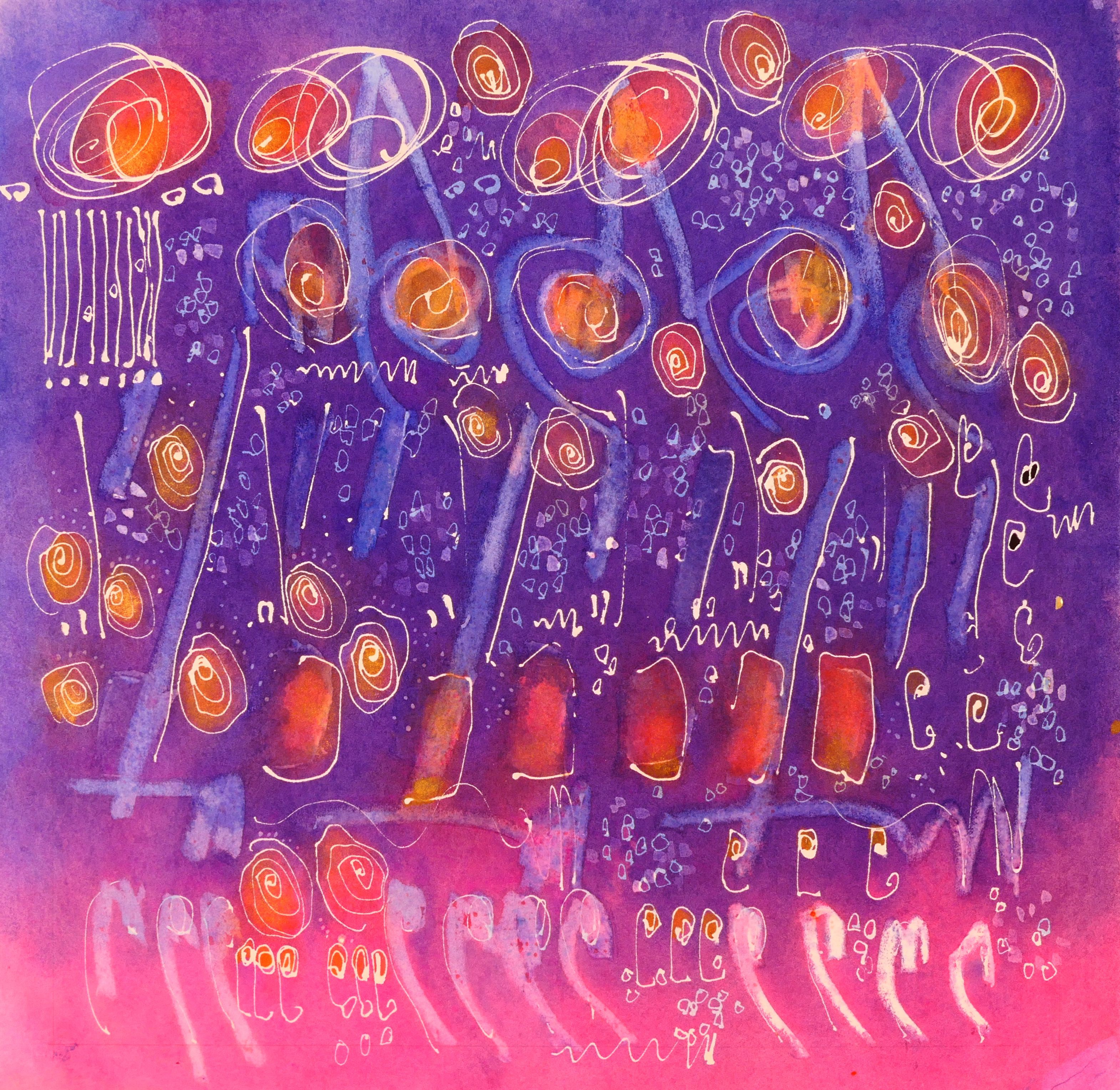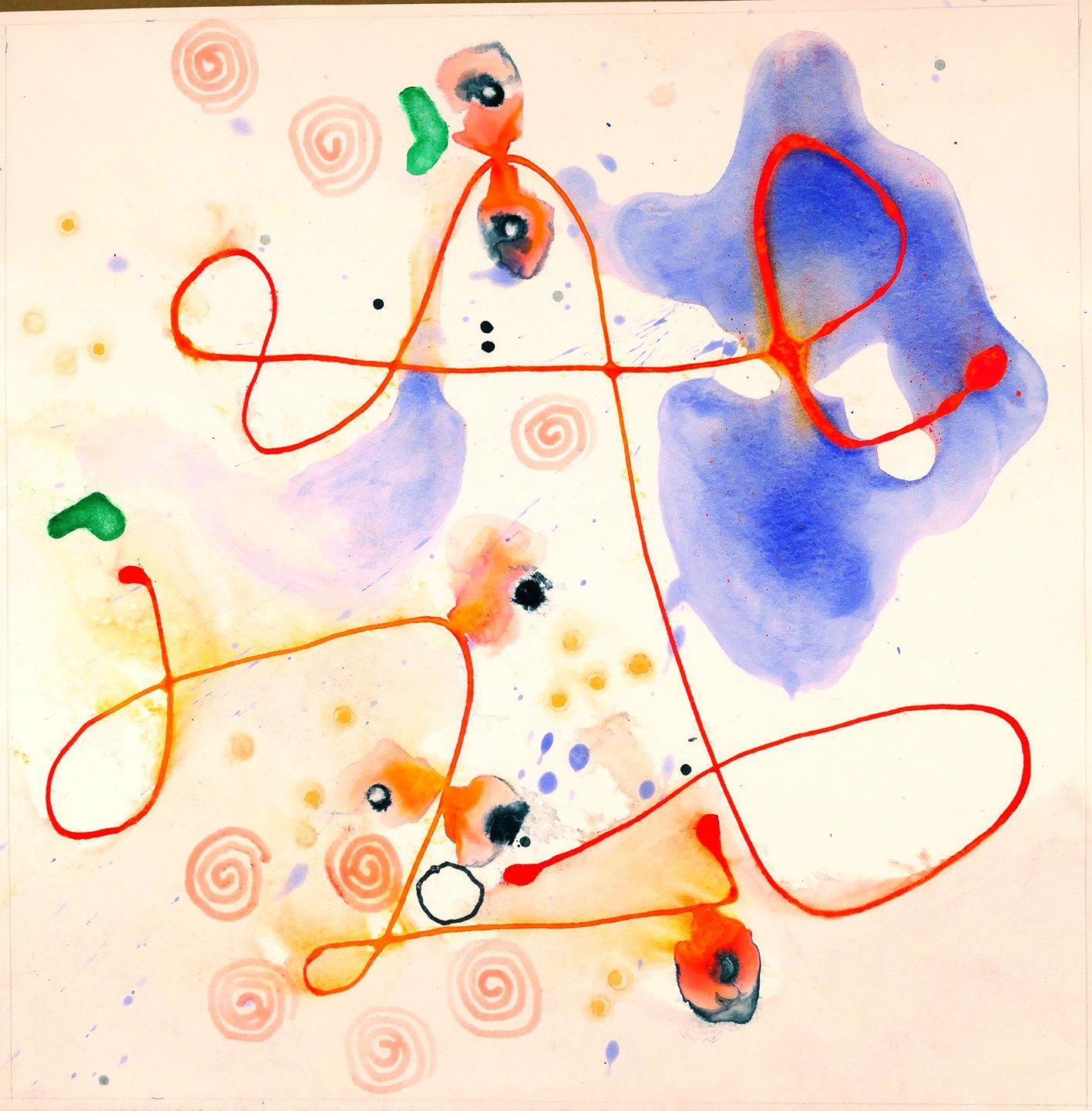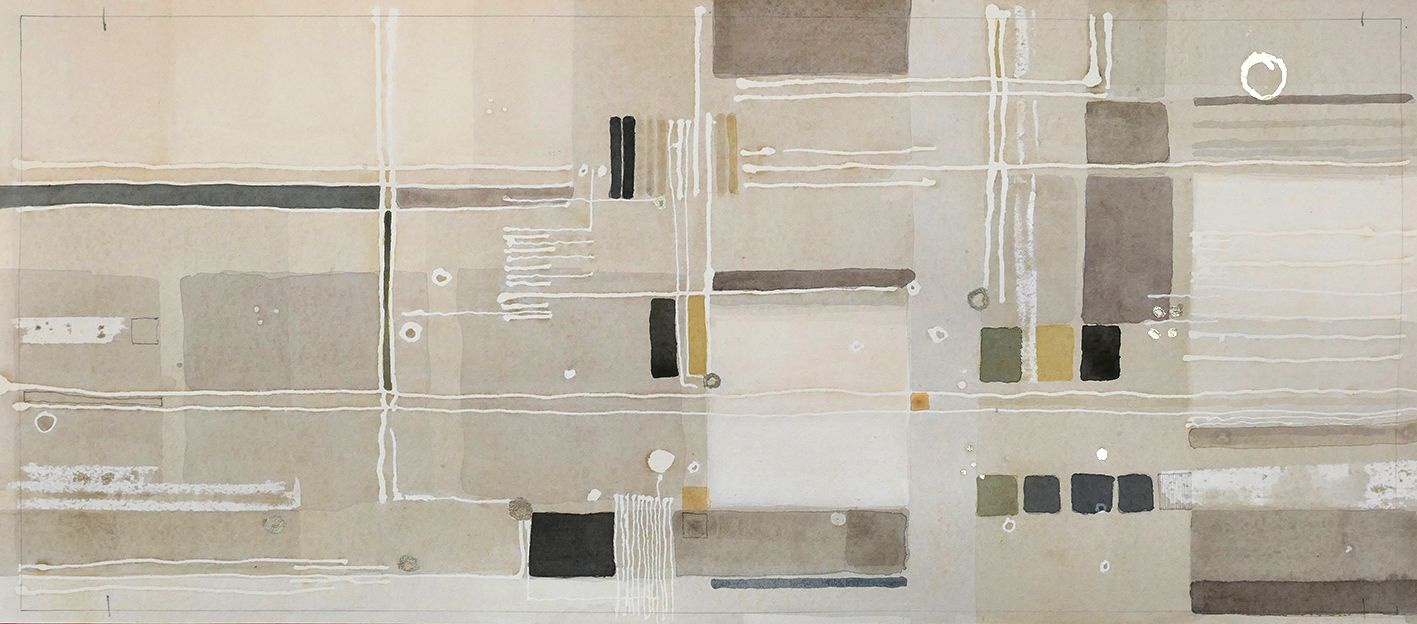
INVISIBLE LANDSCAPES: EDWARD HUTCHISON
Bankside Gallery, London 27 April – 8 May
The Wykeham Gallery, Hampshire 25 April – 4 May
Opening this spring, Invisible Landscapes presents new work by artist Edward Hutchison which encourages us to deepen our connection with the natural environment.

Presented across two galleries - Bankside Gallery, London (27 April – 8 May) and The Wykeham Gallery, Stockbridge, Hampshire (25 April – 4 May) - the exhibition brings together over 90 paintings created by the artist over the past two years, which shed light on intimate elements of nature. From the energy of complex root systems to the vigour of the dawn chorus, the life force of ancient oak trees to the harmony of wildflowers, Hutchison creates evocative abstract images in watercolour, favouring this medium for the depth of rich colour achieved by layering individual washes and the “magical challenge” it offers the artist.
Described by Hutchison as ‘conversation pieces to prompt the urban world to take nature seriously’, the artist’s practice has evolved through many years of close observation as he is also an acclaimed landscape architect, the landscape designer for many multidisciplinary projects including The London Eye, The Indoor Cricket School at Lord’s Cricket Ground, the Peace Garden and Herbert Gallery in Coventry and the Main Square with the Médiatèque in Nîmes, France.
For Hutchison, spending time in the landscape is where it must start. “I find it essential to draw, paint and physically experience the landscape in order to form thoughts first hand,” he says, describing how this can be a “humbling experience”. The exhibition opens with drawings and paintings made en plein air, from the Kent countryside to the drama of the Mani Peninsula in Southern Greece.

This leads to research which, for Hutchison, further inspires his practice. To develop a series of soil paintings, the artist carefully observed microbiological activity under a microscope, and the resulting pictures capture the extraordinary vivacity of this ordinarily unseen world.
The ‘wood wide web’ – the discovery by Dr Suzanne Simards of a network of tree roots and fungi that allows trees ‘to talk to each other’ – is imagined as an intricate, linear form, a complex circuit in calm tones.
And in a wonderfully vibrant series entitled ‘The Dawn Chorus’, Hutchison proposes that the symbiotic relationship between birds and plant life extends to the possibility of bird song promoting plant growth – a theory suggested by research showing that the productivity of orange groves is increased if classical music is played in the early stages of growth.

The chorus becomes a “concert” when Hutchison describes an effusion of wildflowers, and the “delight and pleasure” they evoke is captured in paintings which, the artist says, are as much about the complex pattern of spaces between the rich mixture of plants as they are about the colours and shapes of the flowers.
The powerful presence of veteran oak trees in Richmond Park – some of which are over 750 years old – inspires contemplation of their past, explored in paintings focusing on the swirls of their bark and heartwood, and in the ‘Spirit of the Woods’ series, Hutchison seeks to capture “a magical spirit that needs protecting” in the face of on-going deforestation.
It is this advocacy for the environment that underpins Edward Hutchison’s practice. ‘A war artist for environmental causes’ is how the artist has been described, creating paintings with purpose. Hutchison, who attended COP26, cites a lack of understanding amongst decision- makers as being detrimental to the environment, and intends his paintings to be both stimulating and thought-provoking.
Edward Hutchison says:
“Invisible Landscapes is an expression that draws our attention to the need to recognise the hidden energies and powers in landscape, enabling us to live more in harmony with the environment. These energies may be difficult for us to appreciate but with rapid advances in technology elsewhere, it may not be too long before we begin to better understand the intricate mysteries of the living world. These paintings attempt to suggest some of the interesting theories and ideas currently at the edge of common knowledge about landscape.”
Invisible Landscapes: Edward Hutchison opens at Bankside Gallery, London on 27 April (until 8 May) and at The Wykeham Gallery, Hampshire on 25 April (until 4 May). All paintings are for sale.
About Edward Hutchison
Citing Victor Pasmore and Gordon Baldwin – by whom he was taught – as early influences, Edward Hutchison initially studied at Hammersmith School of Art and Building before going on to qualify as an architect and landscape architect. Under the tutelage of Sir Hugh Casson, P.R.A. at The Royal College of Art in London, Hutchison learned both the enjoyment and necessity of being able to express his thoughts and designs in detailed sketches made en plein air.
Hutchison became an Associate at Foster and Partners - working on projects including the Main Square in Nîmes, France - before establishing Edward Hutchison Landscape Architects in 1991, since which time the consultancy has been commissioned to work on internationally acclaimed projects including: the Judiciary Courts in Bordeaux, France (with Richard Rogers Partnership); The British Embassy and Residence in Damascus, Syria; Pierhead, Liverpool (with Allies and Morrison); the approach to the London Eye (with Marks Barfield Architects); the Peace Garden, Coventry Cathedral (with Pringle, Richards & Sharratt); Indoor Cricket School, Lord’s Cricket Ground (with David Morley Architects); Lloyd’s Register of Shipping (with Richard Rogers Partnership); St John’s College, Cambridge (with van Heyningen and Haward) and many more.
A professional lifetime spent drawing on site led to the publication of Hutchison’s book Drawing for Landscape Architecture (Thames and Hudson, 2011 and now in now in second edition). Over and again, Hutchison emphasises the necessity to experience directly the energy and vitality of an environment, to be able to appreciate fully the dynamism of the cycle of organic natural life.
Previous exhibitions include the Garden Museum, Bankside Gallery, Three Colt Gallery and Wykeham Gallery, Hampshire.
Edward Hutchison advocates for the environment. He has presented to Government and attended COP26 in Glasgow. In 2021, Hutchison co-founded Landscape Matters, a quarterly magazine and debate series to explore landscape concepts and concerns, and to “break down the silo thinking” that surrounds landscape.
On painting in watercolour
“At present 71% of the earth is covered in water and our own bodies are composed of over 60% water, so as a painter, it seems reasonable to express important ideas in this medium. I love the long process of understanding the fundamental rules of watercolour (pigment in water) – surface tension, drying qualities and edges but especially the unique depth of rich colours that can be obtained by applying up to eighteen layers of individual washes on top of each other. In order to maximise the voice of the medium and to minimise my own, I avoid ‘brushmarks’ but rely on applying the colour in a range of unorthodox ways.”
“The Scottish painter Arthur Melville, a magician with watercolour, said that a ‘mistake’ was the beginning of a painting. It is at this point that a tension exists between the paper and painter. If faced with a choice: “if I do this will I spoil the painting?”, I always continue as for me, this is the way to learn to produce new qualities hitherto undiscovered. The journey and process to make finished watercolours creates a lot of spoiled works. Some people describe watercolour as a ‘difficult medium’, but for me this its magical challenge.”